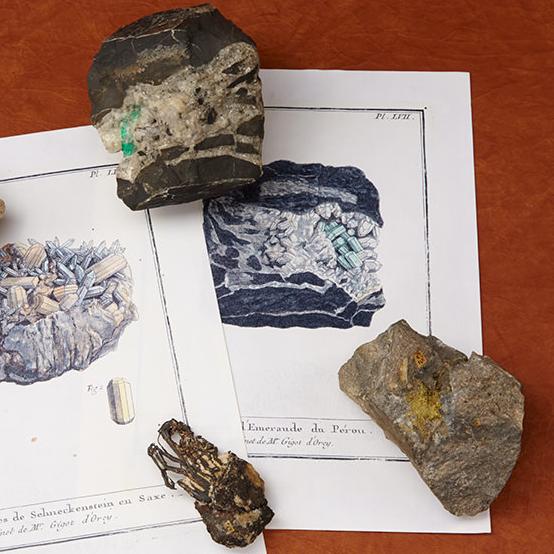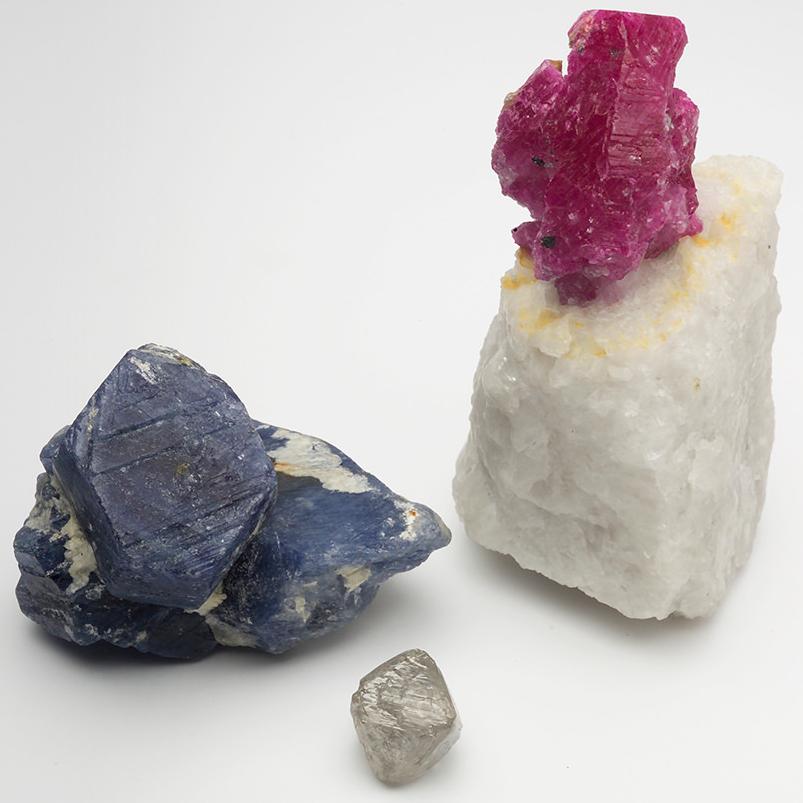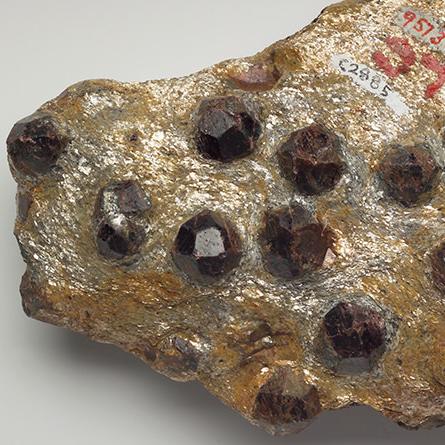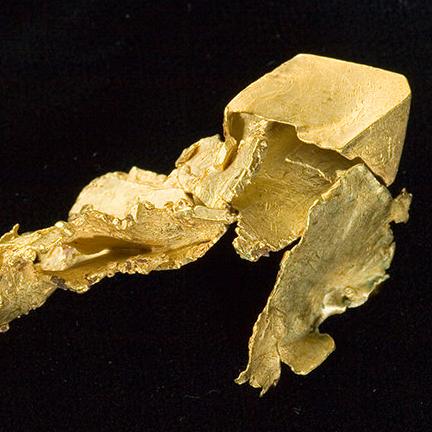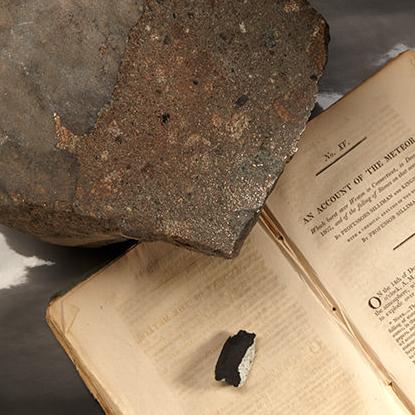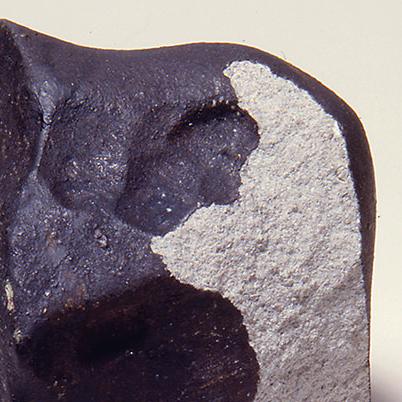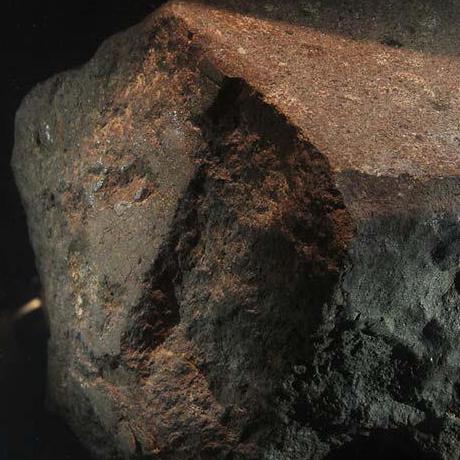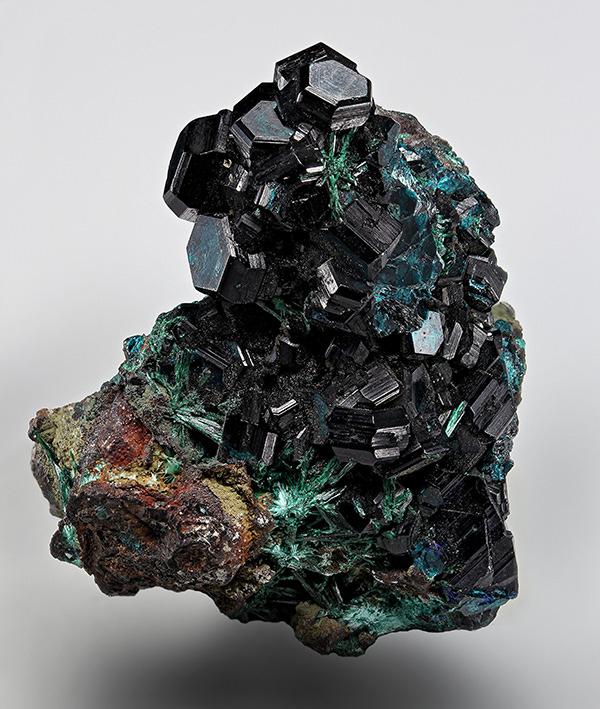Search the Collection
The Yale Peabody Museum’s Division of Mineralogy & Meteoritics oversees a scientifically and historically important collection of more than 60,000 mineral, roughly 5,000 meteorite, and 100,000 rock specimens. Mineral holdings are catalogued into a systematic collection that includes 36 documented type specimens, other presumed type specimens that require further documentation, many referenced specimens, suites of material from localities that no longer exist, early prospecting material, a collection of gemstones, and a sizeable collection of Connecticut minerals.
The Division’s mineral collection, begun at Yale in the early years of the 19th century, grew by acquisition of various “cabinets.” These personal collections, mainly of specimens from Europe, were acquired through the efforts of Benjamin Silliman, James D. Dana, and Edward S. Dana, among others. Yale’s mineralogy collection was the basis of one of the main references in the field, J. D. Dana’s A System of Mineralogy (now in its 8th edition).
The Division’s mineralogy holdings include:
- The George Gibbs III Cabinet, purchased by Yale College in 1825, which included specimens from Jacques Louis, Comte de Bournon, Grigory Razumovsky, and Jean B. F. Gigot d’Orcy.
- A collection of pseudomorphs acquired in 1871, with over 1,700 specimens assembled by Johann R. Blum, the first authority on pseudomorphs, and catalogued by Michael Fleischer in the 20th century.
- The George J. Brush Mineral Collection received in 1904.
- The Lazard Cahn Collection of micromounts, acquired in 1958.
The Division’s meteorite collection is the oldest in the United States. It was begun by Benjamin Silliman with pieces of the Weston, Connecticut, meteorite in 1807, the New World’s first witnessed fall and recovery of a meteorite after the arrival of European settlers. Today the collection contains an estimated 5,000 specimens (including 54 Antarctic meteorites) from around 3,600 localities worldwide, representing every known meteorite type, as well as a representative collection of tektites and other impact-related materials.
Spann Thumbnail Collection
Spann "Thumbnails"
Enjoy a 360-degree interactive experience captured in high resolution and explore every stunning detail of 82 mineral and gem miniatures.
Garnet: The State Mineral of Connecticut
Garnet: The State Mineral of Connecticut
The mineral almandine is a deep red-brown iron aluminum garnet common throughout Connecticut. There are many fine examples in the Peabody’s mineralogy collections.
Connecticut’s “W” Meteorites
Connecticut’s “W” Meteorites
From 1807 to 2013, there have been 5 observed meteorite falls in Connecticut—and 3 came through roofs of houses only miles apart.
Research in the Mineralogy & Meteoritics Collections
The Peabody’s curatorial divisions are governed by the Museum’s collections policies and best practices document. Collections are available to researchers for scholarly use and loans are issued to individuals at established institutions. Loans and access can be arranged through the curatorial division’s collections manager.
|
Stefan Nicolescu
Collection Manager,
Mineralogy & Meteoritics
+1 203 432 3141
stefan.nicolescu@yale.edu
|
For general information on minerals and meteorites, including identifications, contact the Yale Peabody Museum Department of Education at peabody.education@yale.edu.
The Division of Mineralogy & Meteoritics’s largest mineral collection is the George J. Brush Mineral Collection.
In 1866, Yale’s mineralogy collection was included in the newly established Peabody Museum. George J. Brush, professor of metallurgy and mineralogy in Yale’s Sheffield Scientific School, was later appointed the first official curator of the collection. Brush acquired specimens through personal collecting, purchase, and exchange, and he built his collection specifically for research and reference. In 1904 Brush donated it to Yale.
